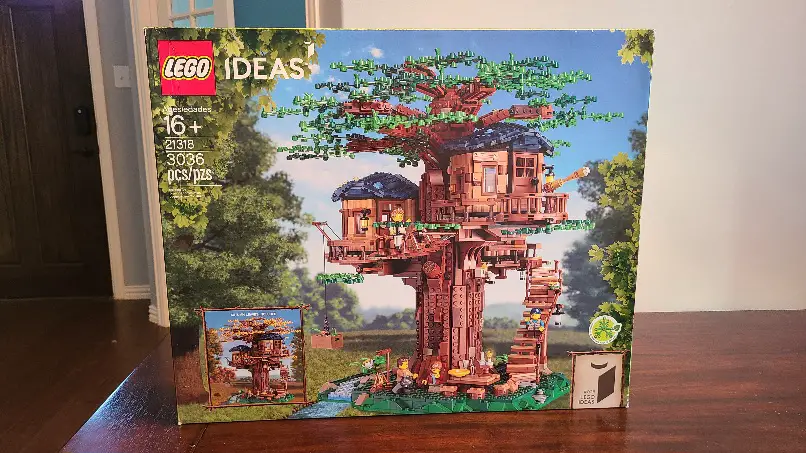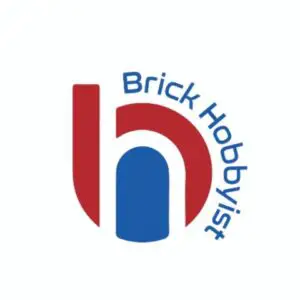
LEGO bricks have been a staple of childhood play and construction for decades, but there has been a lot of debate about whether or not the building blocks are environmentally friendly. In particular, many people wonder if LEGO is made from renewable or non-renewable sources.
The LEGO Group has achieved its ambitious goal of utilizing 100% renewable energy sources three years ahead of schedule. They have also created initiatives to use more recycled materials in their production and packaging processes. As a result, LEGO can be considered a renewable resource, with its products having a much lower environmental impact than many other plastic toys and products.
This commitment to sustainability will have a lasting impact on the environment, allowing LEGO to reduce its overall carbon footprint significantly.
The company has made investments in renewable resources such as wind, solar and hydropower, as well as making use of green energy certificates from other countries.
Table of Contents
Are LEGO Bricks Natural Or Synthetic?
The answer to this question depends on the type of material used to make the LEGO bricks. The majority of traditional LEGO bricks are made from ABS plastic, which is a synthetic material derived from petroleum-based chemicals. As such, traditional LEGO bricks are not considered to be natural or renewable.
While the majority of the bricks used in LEGO sets are made from plastic, and some of these plastics are synthetic, they are entirely non-toxic and safe for kids to play with. All LEGO parts are rigorously tested for safety and environmental compliance, so you can be sure that the plastic used in LEGO sets is free from any toxins.
However, there is now a trend toward using plant-based plastics to create LEGO bricks. These plant-based plastics are derived from renewable sources like corn and sugarcane and are considered more sustainable than traditional plastic. As such, these types of LEGO bricks can be classified as more renewable than traditional plastic bricks.
Does LEGO Run On 100% Renewable Energy?
Yes, the LEGO Group does indeed utilize 100% renewable energy. In April 2019, the LEGO Group announced that they had achieved their goal of using 100% renewable electricity three years ahead of schedule. This milestone was achieved through a combination of initiatives, including buying renewable electricity directly from wind and solar farms.
As well as investing in renewable energy projects in countries where the LEGO Group has its own operations.
The company also plans to continue investing in other renewable energy sources going forward.
The decision to use 100% renewable energy is part of a larger commitment by the LEGO Group to become more sustainable and reduce its environmental impact.
The company has set ambitious goals such as reducing carbon emissions by 40% by 2030 and achieving ‘net zero’ CO2 emissions by 2050.
To do this, the LEGO Group aims to increase the amount of recycled plastic used in their products from 15 percent to 30 percent before 2025.
In addition to powering its operations with renewable energy, the LEGO Group is investing in other ways to become more environmentally friendly.
Such as developing sustainable packaging for its products and introducing new product lines made from plant-based materials like corn starch, sugar cane and pineapple leaves.
The company is also working with suppliers to reduce waste and water consumption throughout its supply chain.
Overall, these initiatives demonstrate the commitment of the LEGO Group to sustainability and reducing their environmental impact. By running on 100% renewable energy and pursuing other green initiatives, the company hopes to set an example for others and help protect our planet for future generations.
Do LEGO Bricks Decompose?
The answer to this question is both yes and no. While LEGO bricks are made from plastic, they are not biodegradable, which means they won’t break down in the environment like organic materials such as food or plants. However, over time and under the right conditions, they will eventually break down into smaller pieces called microplastics.
This process can take decades or even centuries to complete, depending on the type of plastic used in the bricks and environmental factors such as temperature, humidity, and ultraviolet radiation.
In addition to breaking down into microplastics, exposure to these elements can also cause LEGO bricks to fade in color or become brittle due to a breakdown of their chemical bonds.
In general, the higher-quality plastics used in modern LEGO sets are more resistant to weathering than older plastic types. It is also important to note that when exposed to extreme temperatures for long periods of time (such as in a fire), traditional LEGO bricks may burn or melt completely.
LEGO bricks made from plant-based plastics, which the LEGO Group is beginning to make their bricks from, can decompose in the right environment.
Is LEGO Made Of Oil?
Yes, LEGO bricks are made of oil. Specifically, the plastic that is used to make LEGO bricks is derived from a process called polymerization, which uses ethylene and other petrochemicals as the source material. This process creates thermoplastic polymers that are highly durable, lightweight, and can be shaped into almost any form or size.
Does The LEGO Group Use Plant-Based Plastic?
Yes, the LEGO Group does use plant-based plastic in some of its products. The company has recently started using sustainable materials such as polyethylene derived from sugarcane and made from plants instead of oil-based plastic.
This helps reduce the environmental impact that traditional plastics have, and it is part of the LEGO Groups’ commitment to becoming a more sustainable company.
In addition to this, the company has also committed to using sustainably sourced paper packaging and reducing energy consumption in its production processes.
As part of these efforts, they have also launched an initiative to make all packaging recyclable by 2025.
Moreover, LEGO has set a goal to use only sustainable materials by 2030 as part of its ambition to become a more responsible business.
This will mean sourcing more plant-based plastics for their products and introducing new products that are made with recycled materials or fully renewable sources like wood, bamboo or cork.
Besides this, the company has also joined forces with International Animal Welfare organizations in order to ensure proper animal testing standards for its products. All these measures demonstrate how seriously LEGO takes its commitment to sustainability and responsibility towards the environment.
When Did The LEGO Group Start Using Recycled Materials?
The LEGO Group has been a leader in reducing its environmental impact in recent years, with a commitment to sustainability and limited natural resource use.
In 2018, the LEGO Group announced a major environmental milestone — they had begun using plant-based plastic in their products. This was a big step forward for the company, as it meant that they were starting to move away from relying on synthetic materials such as oil-based plastics.
To further reduce its carbon footprint, the company has invested in renewable energy sources such as solar and wind power, which now provide up to 40% of its energy needs. They also use electric cars for deliveries and are investing in new technologies to reduce water consumption and waste production.
In addition to improving the sustainability of its products, LEGO has made strides in reducing its packaging materials. By 2030, all LEGO products will be packaged using only FSC-certified paper with a minimum of 70% paper content. By using recycled plastic in its products and reducing the amount of packaging material they use, LEGO is showing its commitment to sustainability.
One of the first sets to use the new plant-based plastics was the LEGO Ideas Treehouse (21318). This set contained interchangeable leaves, green for summer and yellow and brown for fall. Others sets produced with this new material was the LEGO Botanical Collection.

Specifically, the LEGO Group began to use polyethylene pellets created from recycled plastic bottles sourced from China, which were then processed into high-quality pellets that are used to make LEGO bricks.
The pellets are not only made from recycled material, but they also pass the same stringent quality control testing that the LEGO Group uses for all of its regular raw materials.
Through this initiative, the LEGO Group is able to reduce the amount of new plastic required for production while also supporting global efforts toward creating a circular economy. By 2020, the company had exceeded its goal of ensuring that all core elements in its products would be made from sustainable sources.
Final Thoughts
The LEGO Group is now a renewable source of energy, having met its 100% renewable energy target ahead of schedule.
This is the result of the company’s commitment to reducing its environmental impact and using sustainable resources for production.
With this achievement, the LEGO Group has set an example for other companies regarding primarily green practices and reducing emissions.
They have also invested in several renewable energy sources such as solar, wind and hydropower, enabling them to meet their ambitious target.
Clearly, the LEGO Group is committed to providing an environmentally-friendly alternative that customers can use worldwide.
